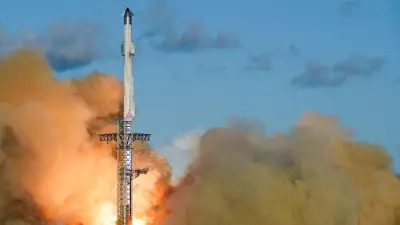
The Century-Long Quest for Hidden Worlds
On a cold February morning in 1930, a determined young astronomer named Clyde Tombaugh made history at Arizona's Lowell Observatory. Hunched over his blinking comparator device, he meticulously studied photographic plates of the night sky when he noticed something extraordinary - a faint dot that had changed position. This discovery would rock the astronomical world and introduce us to Pluto, then celebrated as our solar system's ninth planet.
Nearly one hundred years later, Indian astronomers and their global counterparts continue this same quest, asking the fundamental question that drove Tombaugh: are there more undiscovered worlds orbiting beyond Neptune?
Beyond Neptune: The Icy Frontier
Neptune, discovered in 1846, represents the last of our classical planets. However, its orbit marks merely the beginning of a vast, frozen territory known as the Kuiper Belt. This distant region contains countless icy remnants from our solar system's formation - frozen rocks, comets, and dwarf planets that have remained relatively unchanged for billions of years.
The understanding of this region transformed dramatically in 1992 when astronomers David Jewitt and Jane Luu discovered the first Kuiper Belt Object since Pluto. Designated QB1, this small world opened astronomers' eyes to an entire population of similar bodies. Suddenly, Pluto wasn't the solitary oddball at the solar system's edge but rather one member of a vast collection of icy objects.
The discovery of Eris in 2005 created a planetary classification crisis. Slightly more massive than Pluto, Eris forced astronomers to confront a difficult choice: either recognize dozens of new planets or redefine what qualifies as a planet. The International Astronomical Union's 2006 decision resulted in Pluto's reclassification as a dwarf planet, a move that sparked widespread public debate and disappointment.
As renowned planetary astronomer Alan Stern expressed, "When I was a kid, Pluto was a planet. In my view, it still is." NASA's New Horizons mission later revealed Pluto as a surprisingly complex world with water ice mountains and frozen nitrogen plains, proving that dwarf planets can be geologically active and fascinating.
The Hunt for Planet Nine Intensifies
In 2016, Caltech astronomers Konstantin Batygin and Mike Brown observed something peculiar - a cluster of distant Kuiper Belt objects all moving in similar, elongated orbits. The most straightforward explanation suggested the gravitational influence of an unseen giant planet, potentially five to ten times Earth's mass.
This hypothetical Planet Nine would orbit approximately twenty times farther from the Sun than Neptune, requiring thousands of years to complete a single orbit. While no telescope has directly observed it yet, the search has become one of astronomy's most exciting pursuits.
Indian astrophysicists, including researchers from institutions like the Tata Institute of Fundamental Research, are contributing to this global effort. As Shravan Hanasoge and other Indian scientists note, the question of Planet Nine's existence represents one of modern astronomy's most compelling mysteries.
New Technology Reveals Ancient Secrets
The upcoming Vera C. Rubin Observatory promises to revolutionize our understanding of the outer solar system. Its unprecedented sky survey capabilities could finally determine whether Planet Nine exists or if something even more unexpected awaits discovery.
Meanwhile, missions like New Horizons continue exploring deeper into the Kuiper Belt, capturing images of primordial worlds that have remained untouched since the solar system's dawn. Each new photograph reinforces that our solar system is far more extensive and diverse than traditional textbook diagrams suggest.
The methodology has evolved dramatically since Tombaugh's era. Where he worked alone comparing glass plates, modern astronomy employs armies of computers analyzing terabytes of data, searching for those faint, slow-moving dots in the darkness. Yet the fundamental dream remains unchanged - that somewhere beyond Neptune, another distant world awaits discovery, possibly with Indian astronomers playing a crucial role in its finding.
As India's space program continues to advance, the country's contributions to understanding our solar system's final frontier are growing increasingly significant. From developing observational techniques to analyzing data from international missions, Indian scientists are helping write the next chapter in this century-long astronomical detective story.





